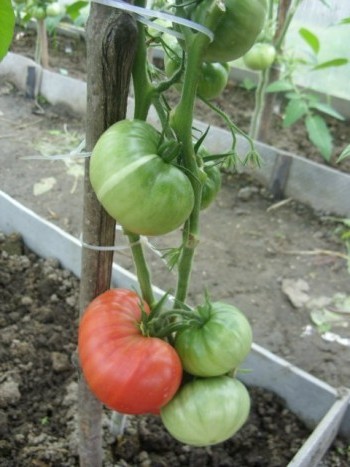 What to grow tomato varieties with photos and descriptions for polycarbonate greenhouses? For greenhouses, breeders have specially bred such varieties that will yield the maximum yield precisely in closed ground conditions. In general, tomatoes are not suitable for growing in a greenhouse. But, fortunately, this was noticed a long time ago.
What to grow tomato varieties with photos and descriptions for polycarbonate greenhouses? For greenhouses, breeders have specially bred such varieties that will yield the maximum yield precisely in closed ground conditions. In general, tomatoes are not suitable for growing in a greenhouse. But, fortunately, this was noticed a long time ago.
To date, breeders have been able to improve some varieties and get productive hybrids that are suitable for growing in soil that is closed from direct sunlight.
Difficulties of growing tomatoes for open ground in a greenhouse:
1. This vegetable loves light. It is clear that polycarbonate delays part of the sun's rays, even if absolutely clean.
2. Tomatoes love moisture in moderation (unlike, for example, cucumbers). At the same time, they will grow well at a sufficiently low humidity of 60% during the growth period and 75% during the fruiting period. In greenhouses, humidity, whatever one may say, is often close to all one hundred percent.
3. Overheating tomatoes do not tolerate well. If the temperature is kept at thirty degrees Celsius for several days, then the pollen becomes sterile.
It is clear that tomato varieties with a photo and description for polycarbonate greenhouses were bred in such a way as to successfully transfer all the conditions that tomatoes could not endure for open ground.
What to look for when choosing varieties of tomatoes for a greenhouse:
1. Such hybrids can grow and bear fruit even if there is not enough light. Of course, here we are talking about a small error, but such improvements can be noticed.
2. Greenhouse tomatoes are distinguished by the fact that they can produce excellent fruits in high humidity.
3. Such varieties can tolerate even sudden changes in temperature conditions.
4. When forming the stem in a tall bush, which saves space in the greenhouse, such varieties will give a good harvest.
5. It is very important that hybrids for the greenhouse are disease resistant! We are talking about late blight, fusariosis and TMV (tobacco mosaic virus).
Varieties of tomatoes with photos and descriptions for polycarbonate greenhouses
Eupator (F1 hybrid)
This is not a variety, but a tomato hybrid. But do not be afraid of this word, with genetic engineering, hybrids of vegetables have nothing to do. It’s just that the variety was specially created for difficult greenhouse conditions. These tomatoes went on sale back in 2002. They are characterized by high productivity, gardeners collect forty kilograms from one square meter. They are distinguished by their resistance to diseases, they love light (must be taken into account when growing in the northern regions).
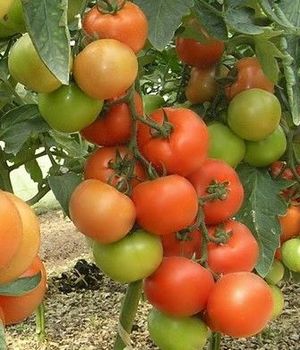
Budenovka
This is a variety, moreover, of our native Russian selection. It was bred in 2002 and is perfect for indoor use. The height of the bushes is average, characterized by early ripening. The fruits are large up to 350 grams, have an interesting heart shape and a bright red tint. They taste great tomatoes and are suitable for fresh consumption. True, the yield per square meter is only 9 kilograms.
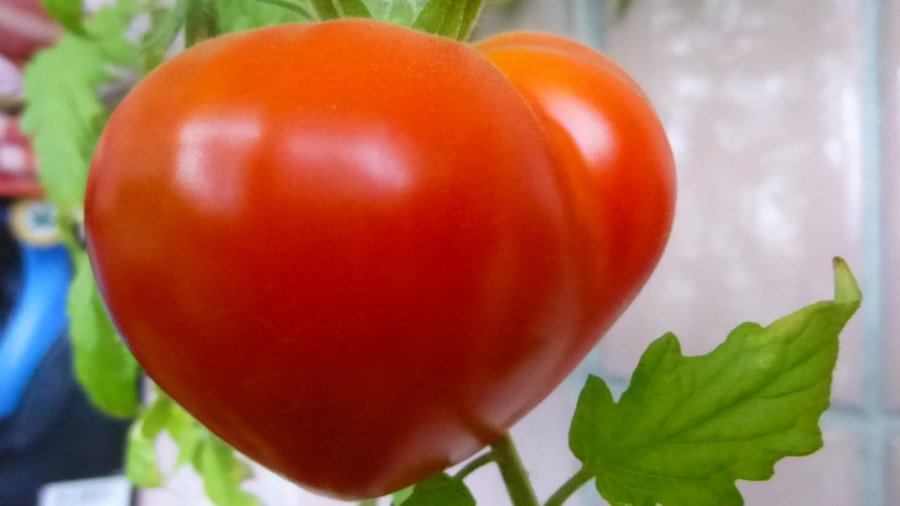
"Pink Elephant"
An interesting name that you must remember, because, for greenhouses made of polycarbonate, this is one of the best varieties. It gives an excellent harvest, the fruits are round and large, pink in color and incredible in taste. Unpretentious in care, perfect for gardeners without experience. You can grow in all regions of the country, and the yield is eight kilograms per square meter.

Blagovest F1
A high-yielding hybrid that produces up to 17 kilograms of fruit per square meter.It appeared a long time ago, in 1996, and is well known to our gardeners. The bush will be high, the hybrid spets early. A bush is formed in one stem up to one and a half meters and has no stepsons. The fruits are medium in weight 100 grams. Excellent tomatoes of this variety are suitable, including for canning.
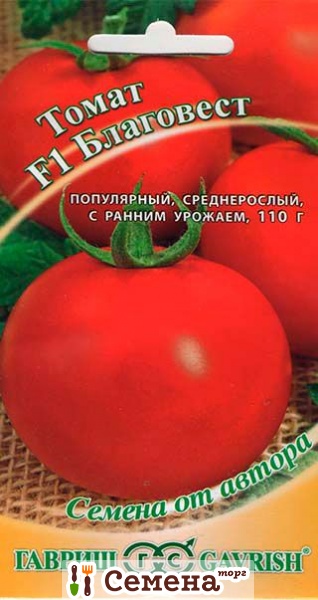
Mikado Pink
This variety cannot be attributed to high-yielding, but the fruits grow very juicy and tasty. Tomatoes are large enough, up to 260 grams, rounded and have a rich pink color. An ideal salad tomato that grows well in a greenhouse. Moreover, the bush grows to two meters and has no stepsons. About six kilograms of tomatoes will be collected per square meter.

Remember the area
When choosing a variety for growing, special attention should be paid to the area where the cottage is located. Today, breeders are trying to adapt each hybrid variety to specific growing conditions and climatic conditions. It is clear that the characteristics of the cultivar for cultivation in the South and in the North will differ.
Tomatoes of southern varieties must be covered from the scorching sun. Because of this, plants in such regions develop more slowly. On the other hand, the tomatoes of the north are oriented for a short summer. They need to grow quickly to form a crop and turn red. Therefore, in northern tomatoes, the foliage area is usually smaller and the leaves are arranged so as not to obscure the ripening fruits.
If you plan to grow these vegetables in closed ground, you must definitely choose tomato varieties with a photo and description for polycarbonate greenhouses. As a rule, here the feature of the greenhouse does not matter and everything that is suitable for covered ground is suitable for any type of greenhouse.
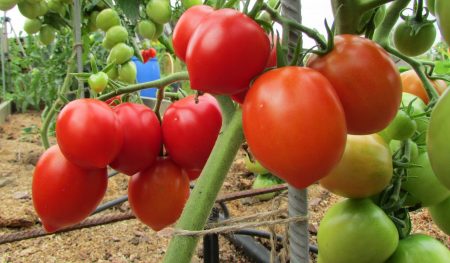
Focus on the type of growth (focus on this characteristic, if the manufacturer has not indicated on the pack whether tomatoes are suitable for growing in a greenhouse):
1. Superdeterminant varieties are suitable for early harvest in both greenhouses and open ground.
2. Indeterminate varieties of tomatoes are suitable for greenhouses, and in the southern regions such tomatoes can also be planted in open ground.
3. Determinant tomatoes are grown in open ground and in the greenhouse. But you need to monitor how much time the vegetation period takes to meet the deadlines when growing in open ground.
Do not forget that before planting seeds you need check and additionally carry out prevention from diseases and parasites. The check is carried out as simple as possible - put the seeds in a bowl of water and remove everything that comes up to the surface (they are dummies and will not sprout). As for preventative treatment, a weak solution of potassium permanganate can be used for this. Soak seeds in it for 20 minutes, and then rinse with running water.




 Low-growing tomatoes, without pinching: 5 of the most delicious varieties
Low-growing tomatoes, without pinching: 5 of the most delicious varieties Why tomato seedlings grow poorly
Why tomato seedlings grow poorly We grow a tomato in a shell
We grow a tomato in a shell Growing tomatoes without watering according to the method of Kazarin
Growing tomatoes without watering according to the method of Kazarin